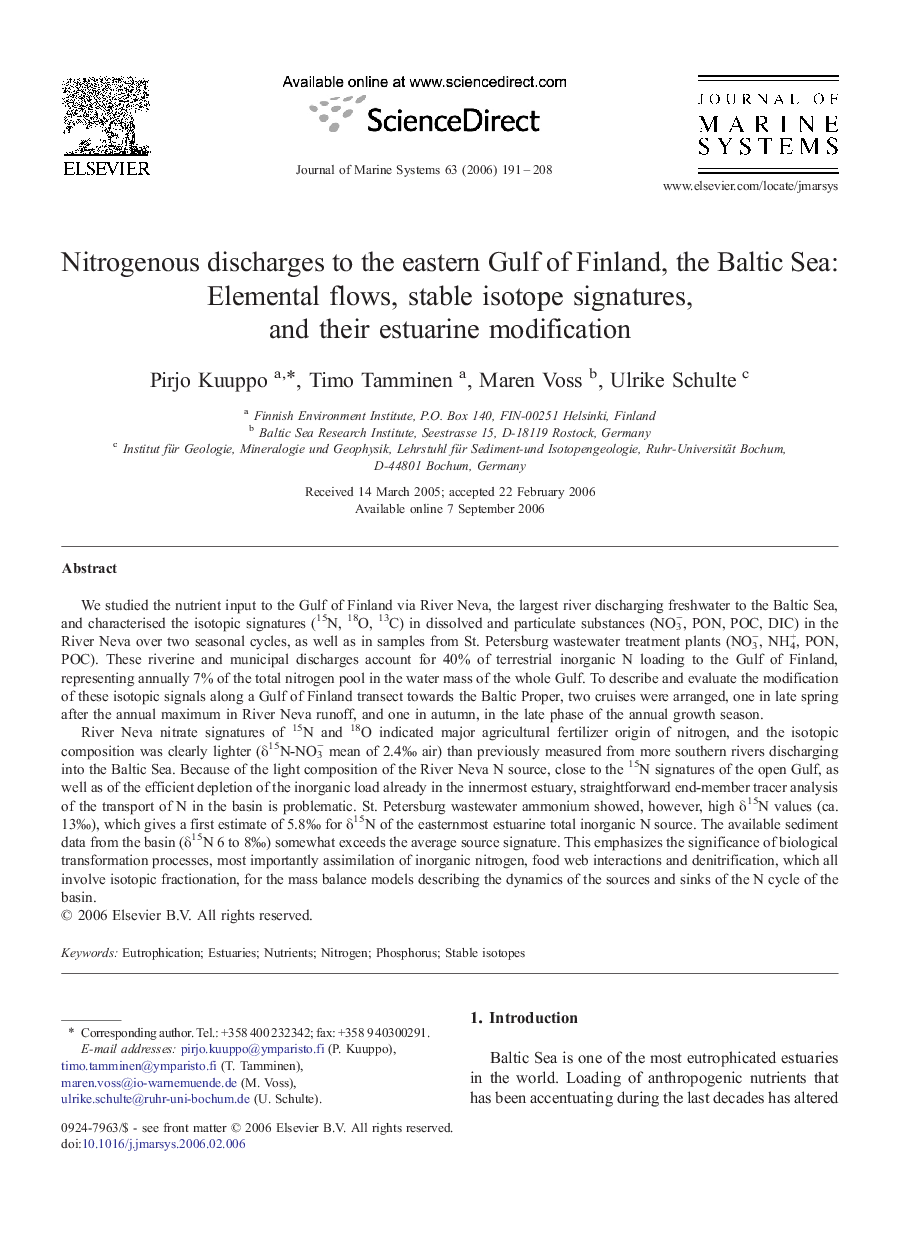| Article ID | Journal | Published Year | Pages | File Type |
|---|---|---|---|---|
| 4549241 | Journal of Marine Systems | 2006 | 18 Pages |
Abstract
River Neva nitrate signatures of 15N and 18O indicated major agricultural fertilizer origin of nitrogen, and the isotopic composition was clearly lighter (δ15N-NO3â mean of 2.4â° air) than previously measured from more southern rivers discharging into the Baltic Sea. Because of the light composition of the River Neva N source, close to the 15N signatures of the open Gulf, as well as of the efficient depletion of the inorganic load already in the innermost estuary, straightforward end-member tracer analysis of the transport of N in the basin is problematic. St. Petersburg wastewater ammonium showed, however, high δ15N values (ca. 13â°), which gives a first estimate of 5.8â° for δ15N of the easternmost estuarine total inorganic N source. The available sediment data from the basin (δ15N 6 to 8â°) somewhat exceeds the average source signature. This emphasizes the significance of biological transformation processes, most importantly assimilation of inorganic nitrogen, food web interactions and denitrification, which all involve isotopic fractionation, for the mass balance models describing the dynamics of the sources and sinks of the N cycle of the basin.
Related Topics
Physical Sciences and Engineering
Earth and Planetary Sciences
Oceanography
Authors
Pirjo Kuuppo, Timo Tamminen, Maren Voss, Ulrike Schulte,
